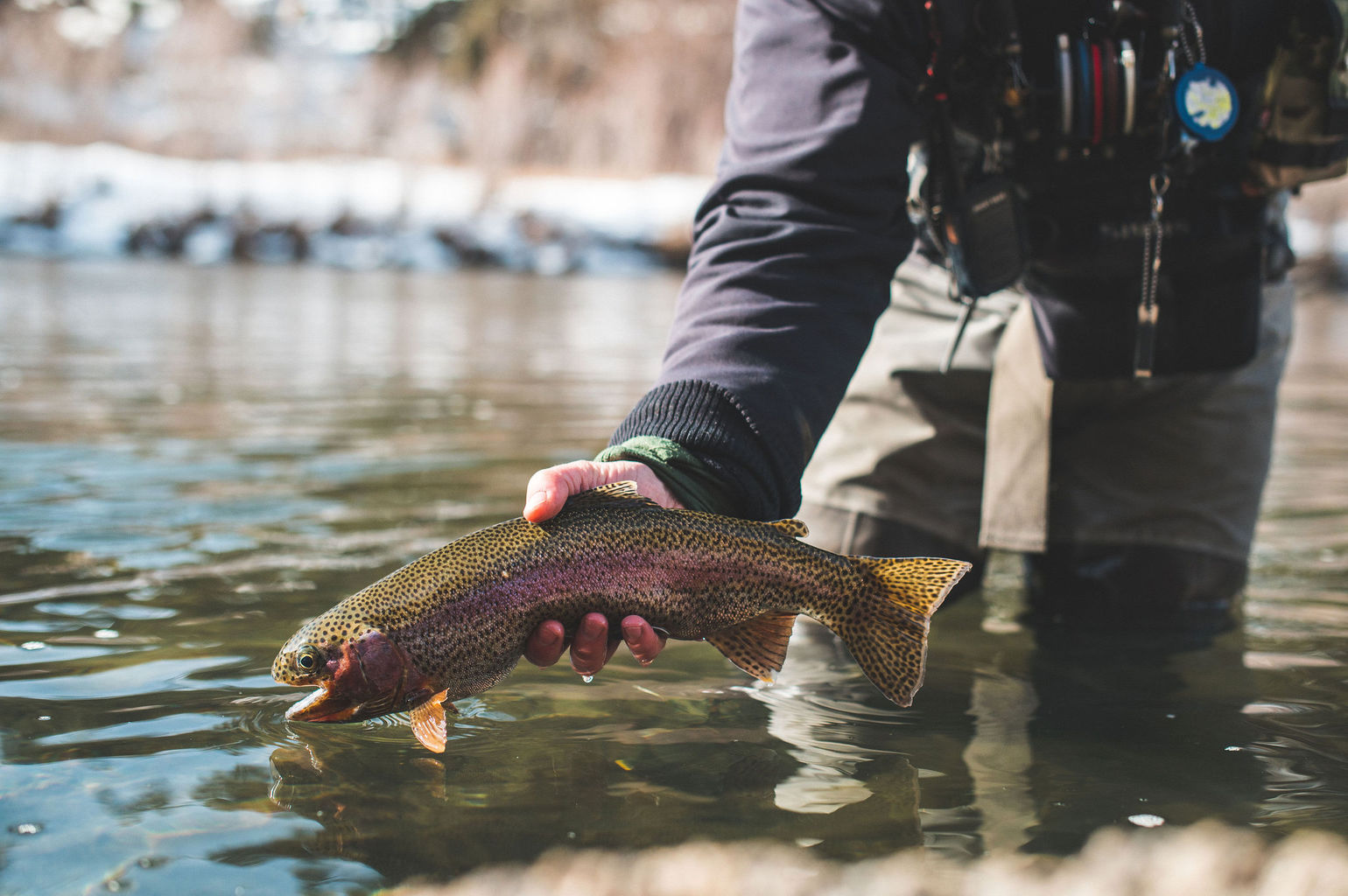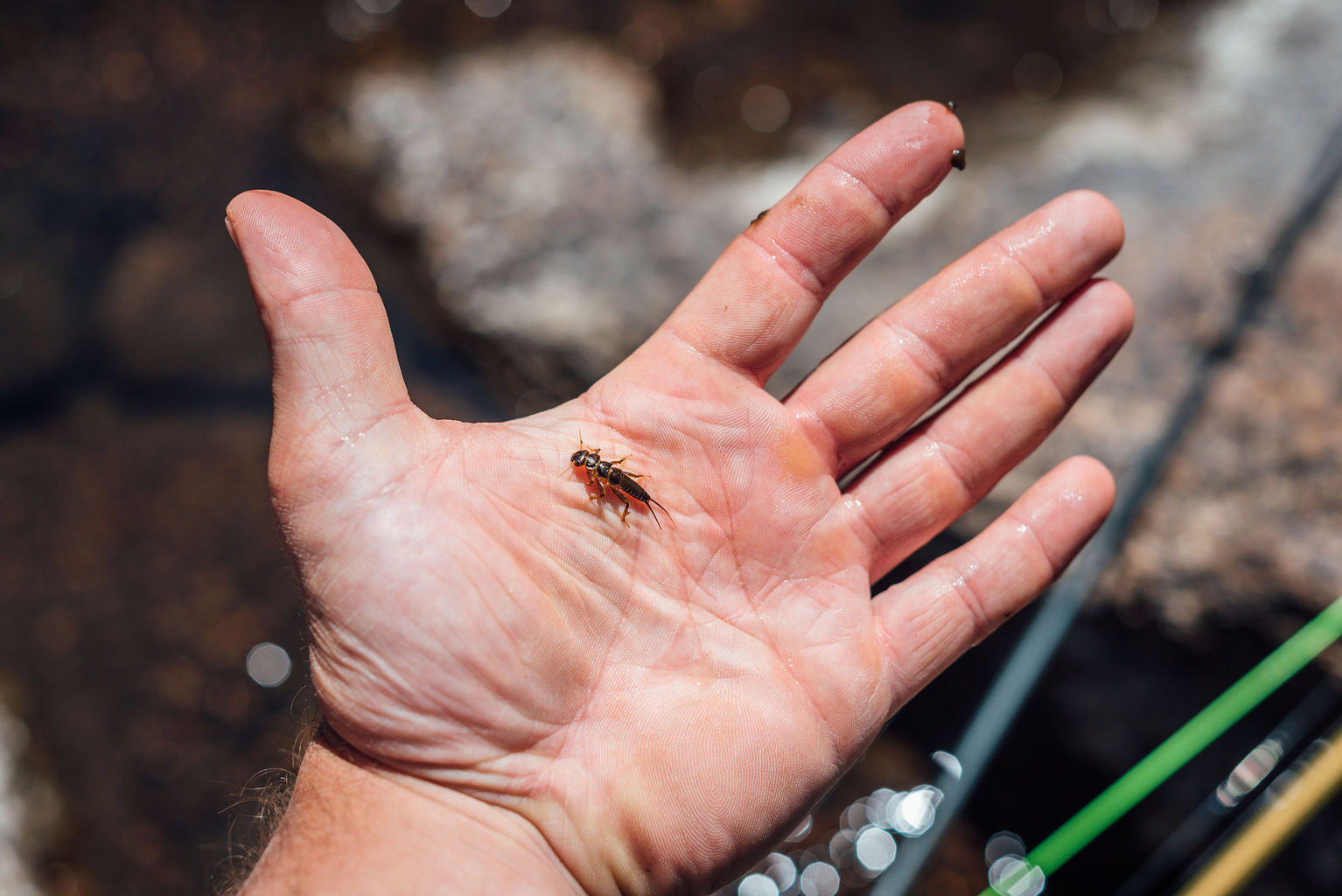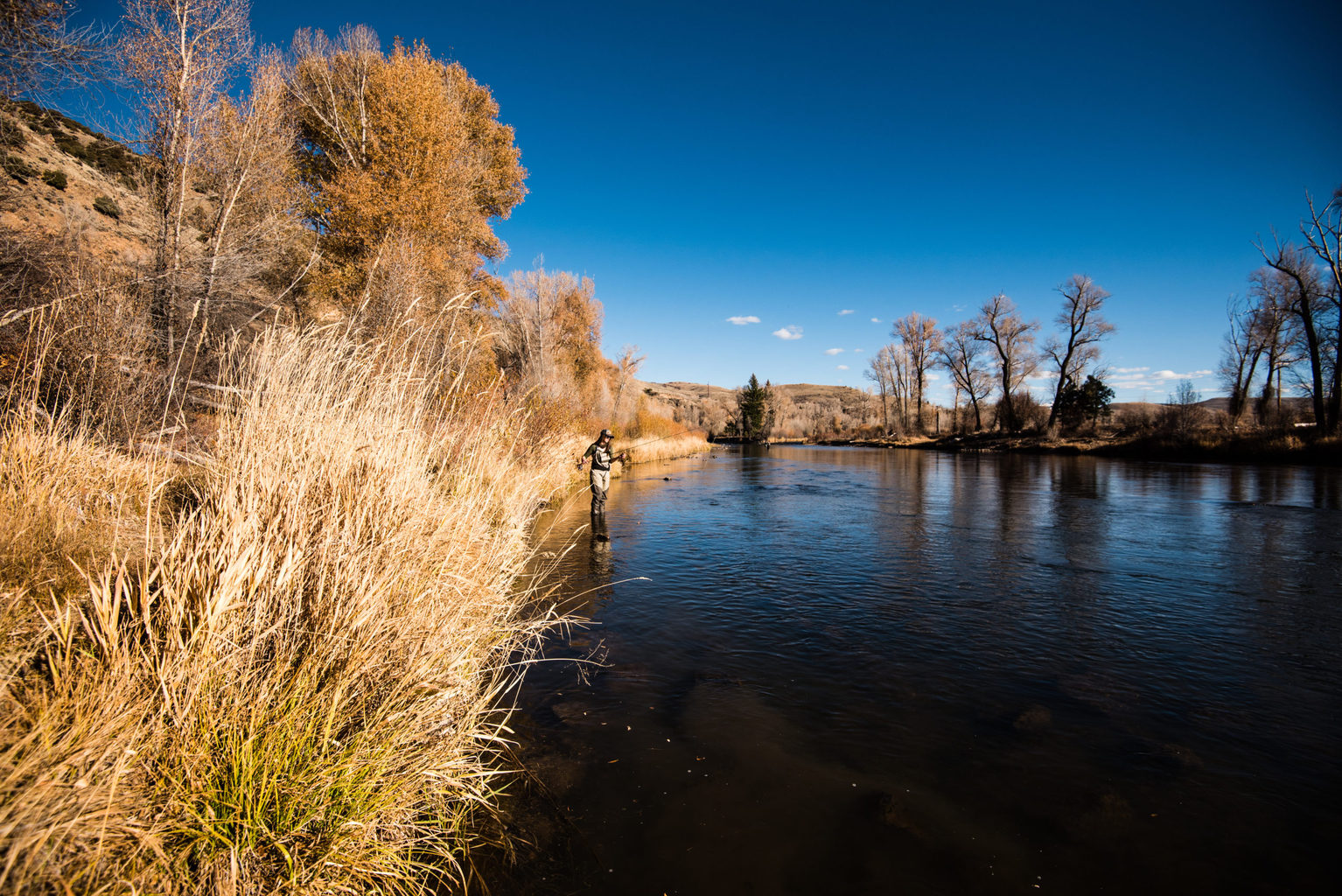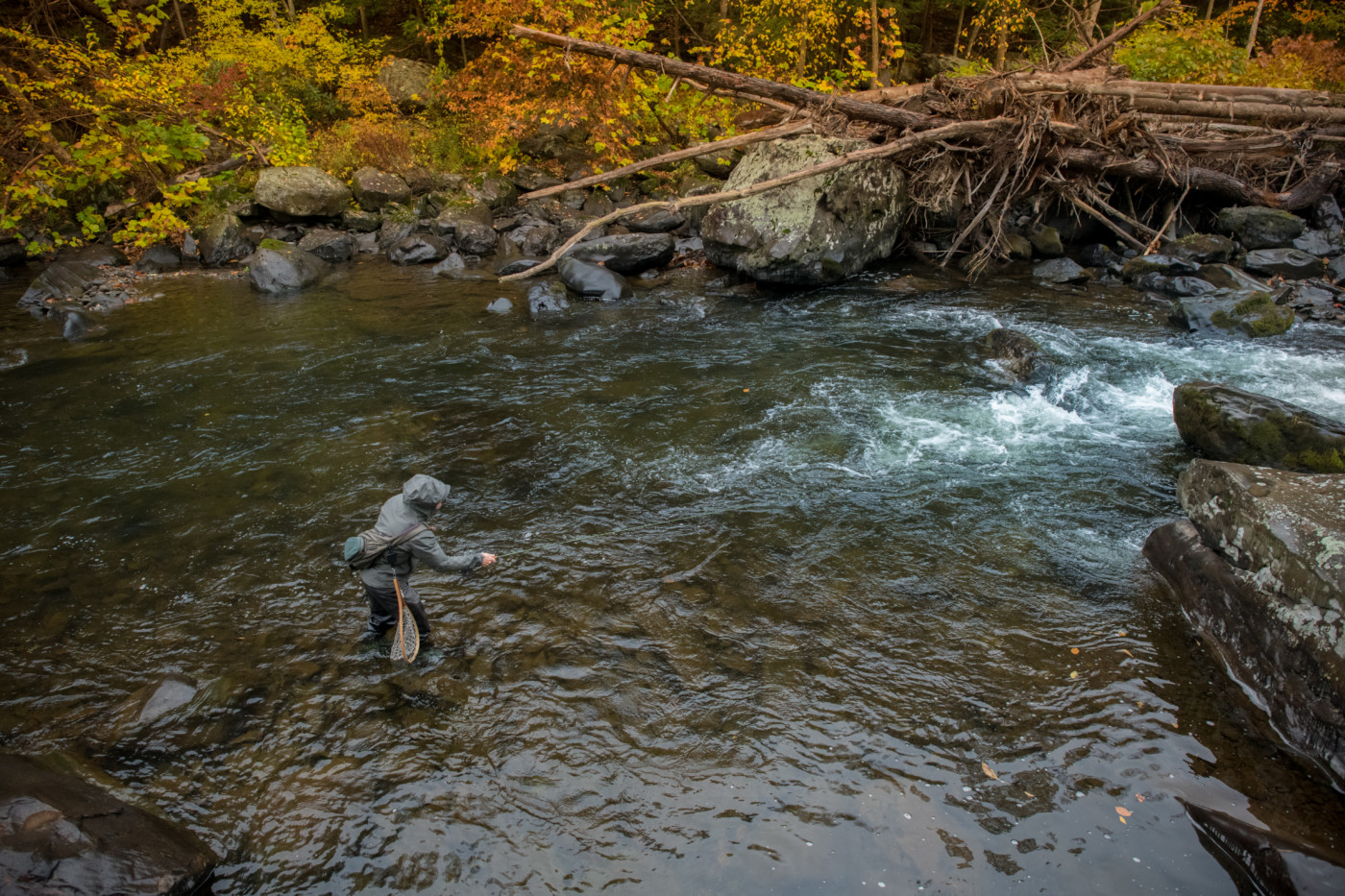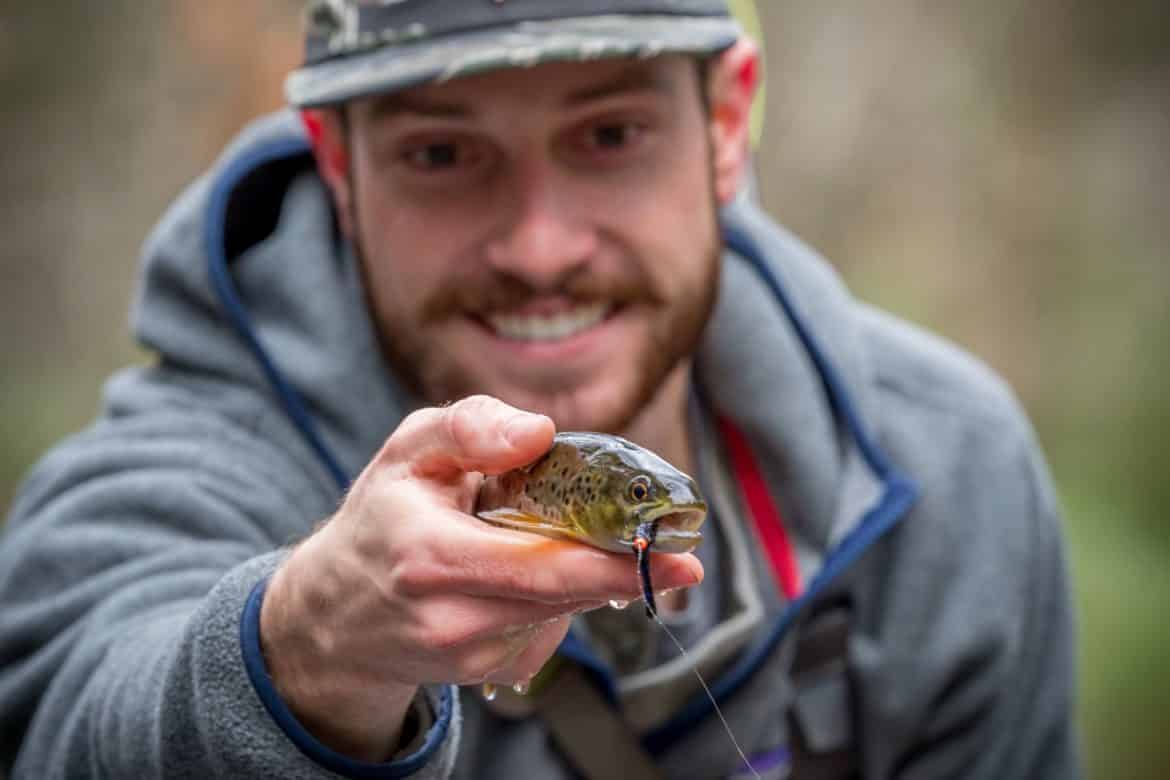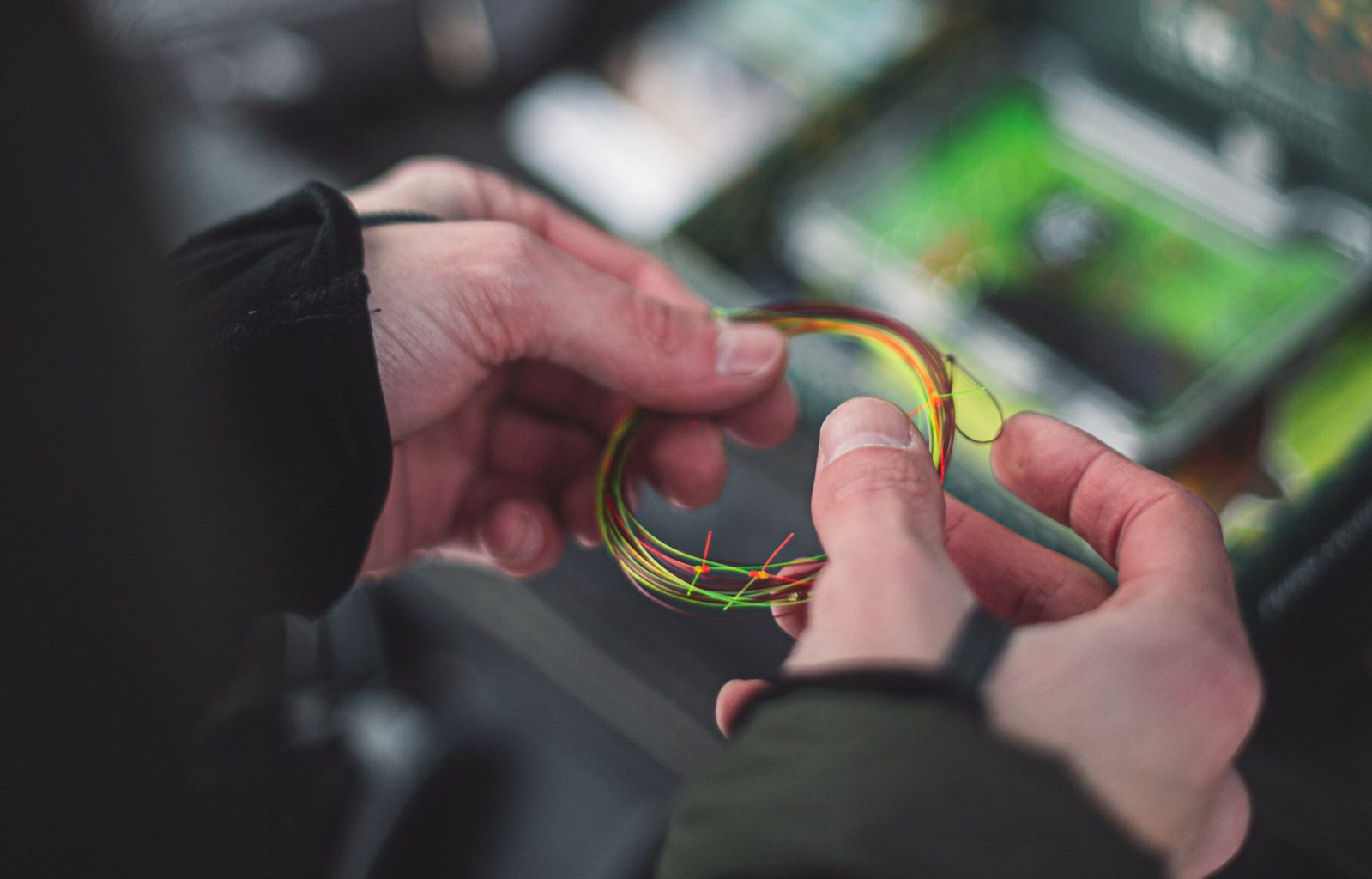15 Useful Explanations That Make Nymph Fly Fishing Stupid Simple
Fly fishing has so many different techniques and skills to learn, but, by far one of the most effective at catching fish is nymphing. Nymphing is essential to every fly angler so we dedicated this entire article to answer the most common questions we get.
Table Of Contents
- What does nymphing mean?
- What is the difference between nymphs and wet flies?
- What is a nymph fly?
- Is nymphing really fly fishing?
- How do you fish a single nymph?
- How do you fly fish with two nymphs?
- What depth do you fish nymphs?
- How many nymphs can you use at once?
- What is the difference between nymphing and euro nymphing?
- What is tight line nymphing?
- Where do you put the split shot on a nymph rig?
- What is an attractor nymph?
- How do you rig a dry fly and nymph?
- What kind of leader do you use for nymphing?
- Do colored beads help you catch more fish?
What does nymphing mean?
Nymphing is the act of presenting fly fishing flies beneath the water surface to imitate nymphal or larvae stages of aquatic insects and, on rare occasions, sunken flying insects. By using weighted flies or flies intended to sink, the objective of nymphing is to fish your fly fishing flies beneath the surface whether it is suspended within the water column or rolling along the bottom of the stream.
Usually, you’re not actively retrieving your line when nymphing but rather leaving your line in the water to represent an insect drifting lifeless in the water, called “dead-drifting.” There are instances where twitching or adding movement to your nymph flies may be effective, but don’t confuse nymphing with retrieving streamer flies such as swimming baitfish or minnow imitations. Instead, nymphing takes a more passive approach to fly fishing where you let the current do the work for you.
What is the difference between nymphs and wet flies?
The main difference between them are nymphs are much heavier than soft hackled ‘wet flies’, usually weighted with wire or beads.
Nymphs are actually a subcategory of wet flies. In the family tree of fly fishing flies it splits into two main categories — wet flies and dry flies. Nymph patterns fall under the wet fly category because they sink. We call them wet flies because they are meant to be submerged under the water and sink. Dry flies are designed to float in some fashion, staying dry above the surface.
Just to recap, nymphs are wet flies — technically.
With that being said, most fly anglers think of wet flies as an entirely different category of unweighted and thin fly patterns to be fished under the surface. Let’s say you were to walk into a fly shop and ask to see wet flies, more often than not they will show you a selection of soft hackled patterns — patterns that have very little weight and are characterized by a slim profile with a feathered collar near the eye of the hook. Soft hackled wet flies represent an emerging insect’s ascent to the surface.

The Hare’s Ear Nymph is a textbook example of a nymph fly. It features a gold colored bead with wire wraps on the underbody. The specific purpose of this pattern is to sink near the bottom and imitate a large variety of nymph stages.

Dusty’s Olive Soft Hackle is a classic soft hackle wet fly pattern. Overall, this pattern is designed to be extremely light with no added weight and be fished near the surface — at the top of the water column.

What is a nymph fly?
In simplistic terms, a nymph fly is a sinking type of fly fishing fly that imitates the naturally occurring insect larva and nymphal stages of aquatic insects commonly found in streams, rivers, ponds, and lakes.
Insect nymphs and larvae are commonly found under or on rocks, in aquatic vegetation, fallen tree branches in the water, and even in gravel, sand, or loose sediment.
They do not have wings nor can they fly in this insect stage. Instead, they scavenge and hunt for food by crawling along the streambed, which means they constantly live underwater. Because of this all nymph patterns found in fly fishing are used to sink and to be fished under the water.
Is nymphing really fly fishing?
Absolutely! Nymphing is a critical part of fly fishing. Over 50% of a fish’s diet is consumed below the surface which makes ‘nymphing’ an effective way to fly fish. Fish won’t always feed on dry flies so bring the food to them by switching to the nymphal and larvae imitations of what’s already in the water.
How do you fish a single nymph?
Fishing just one single nymph is the simplest way to use nymphs. You avoid tangles and all the headaches of casting multiple flies at once.
To rig a single nymph, start by using a long tapered fly leader of at least 7-feet. Use a Clinch Knot to tie your nymph the thinnest end.
From there you can either fish your nymph with or without a strike indicator, which is a form of a bobber commonly used in fishing to suspend lures or bait within the water.
Using a strike indicator depends on how far you need to cast and how easily spooked the fish will be. Typically, you’ll want to use a strike indicator to cast long distances and if you need to be far enough away to avoid scaring the fish. You’ll want to place your strike indicator 1.5-times to 2-times the depth of the water.
So if the water is 4-feet deep, place your indicator 6 to 8-feet up from the nymph on the leader.
You can also use a dry fly of your choice as a strike indicator in what’s called a Dry-dropper rig or Hopper-dropper rig. This allows you to double your chances by presenting two flies at once.
Otherwise, you can fish without a strike indicator. In our opinion, this is the best way to fish a single nymph – using a technique called tight-line nymphing because you can feel strikes and set the hook better. This requires you to stand close to the area you are fishing, roughly 1 to 2 rod lengths away to make short casts.

How do you fly fish with two nymphs?
Fly fishing two nymphs at once is just a few simple steps from fishing just one nymph but it increases your chances of catching fish significantly. Why? Because adding an extra fly means more weight and a faster sink rate – therefore, a longer presentation in the feeding zones along the bottom.
The easiest way to fish 2 nymphs is to tie in the lightest nymph on first with a Clinch Knot to the end of your fly leader. Think of this fly as the one that will remain highest in the water column. Then snip a 12-inch to 16-inch section of 4x, 5x, or 6x tippet to tie on to that fly with a Clinch Knot to either the eye of the hook or off the hook bend. Lastly, use a heavier nymph to tie on to the end of the newly added section of tippet by yet another Clinch Knot. This last fly is referred to as the lead fly in a nymphing rig because it leads the line downstream.
- Tie the first nymph to the end of your leader.
- Snip a new 12-inch to 16-inch section of tippet.
- Tie the new section of tippet to the first nymph from Step 1.
- Attach the second nymph to the end of the tippet from Step 3.
Read here to see our favorite two-nymph fly combinations.

What depth do you fish nymphs?
Typically, you want to fish your nymph deep rolling along the bottom of the stream – searching the bottom for fish. Fish usually stay close to the bottom to burn as few calories as possible while feeding because the water current is slower. The friction caused by the water flowing over the streambed slows the current down enough to where most fish can rest.
With that being said, insect larvae and nymphs get swept up in the current from their crevasses into higher water columns. So the best depth to fish nymphs is along the bottom and just above it. In some cases, you can be extremely successful at targeting trout feeding just below the surface with a well-placed nymph. This feeding activity is a result of hatching larvae making their way to the surface only to fail and get stuck within the surface film.
How many nymphs can you use at once?
The number of fly fishing flies you use at once depends on your local regulations. Typically, you can use between 2 to 3 flies on a single line. If you’re fishing on special regulation waters, check online with your state or examine the stream-side posting. If there are no particular specifications listed, assume a 3-fly maximum. Granted, this may not always be true and make sure to do your research beforehand to avoid any hefty fines.
What is the difference between nymphing and euro nymphing?
Euro nymphing is a specialized form of nymph fly fishing using only heavily weighted nymphs with no split shots or floating strike indicators. It has been referred to as Czech, French, Tight-line, High Sticking, and Polish Nymphing.
Euro Nymphing uses a single line, with a heavily weighted nymph or multiple nymphs at the end of the tippet. There is a sighter line between the main line and tippet. This is attached to another long piece of leader that then goes directly to the main fly line. There is no shot for weight, or floating bobber indicator. The sightline helps an angler detect a strike on a tight line.
Sure, much of this is similar to conventional nymphing, however, it is the technique in fishing nymphs that makes Euro nymphing different from typical nymphing. Euro nymphing is about drifting a fly on a tight line, feeling the bottom with as little line contact on the water as possible.
The technique is as simple. You simply implore a roll cast of sorts, lead the fly on a high rod, no mending, while keeping a tight line. When the fly finally starts to tail out of the drift, swing it through, as it rises in the water column downstream and about even with your hip, use that tension and “roll” cast again. No-fuss no muss.
What is tight line nymphing?
Tight line nymphing is a technique using only short casts to maintain line control for faster hook sets and increased sensitivity to bites. It’s called “tight line” nymphing because you should keep your line almost taut from the end of your fly rod to the flies. As soon as a fish takes your flies you will immediately feel the tension and be able to react faster.
You can use any fly rod to start tight line nymphing, although an extra foot or two in length doesn’t hurt on bigger water. Only use about 1 to 2-rod lengths of line. Anything longer than that and you’ll lose control of your line and miss bites.

Where do you put the split shot on a nymph rig?
Adding split shot above the flies is typically the most common weight placement on a nymph rig. To simply explain the setup, the leader is tied onto the fly line, an indicator is added somewhere on the leader, a tippet ring is tied onto the end of the leader, tippet and flies extend below the tippet ring, and weight is attached above the tippet ring.
This is a great spot for the weight because the tippet ring will prevent it from sliding down closer to your flies and altering the drop rate and drift unnaturally. If you could look under the water as the rig is drifting, the weights would drop down at or near the bottom, and the flies will trail behind in a similar position in the water column. Since you’re trying to mimic natural bugs on the bottom, weight added above the flies is the perfect spot to get your flies down!
You can also put split shot between your flies in multi-fly rigs. This can certainly be a trickier spot to attach weights onto a nymph rig for the simple fact that there isn’t an easy anchor point to prevent their sliding. However, sometimes it’s important to have some extra weight here to keep the trailing flies down near the bottom.
An example of this is a nymph rig that might have a heavy stonefly as the point, with an unweighted squirmy worm or egg pattern trailing behind. Those smaller, lighter flies are a long way from the weight above the tippet ring, so they can have a tendency to float higher in the water column and go above the desired fishing depth. It’s usually easy to see this happening for those who are observant as you’ll watch the flies bouncing closer to the surface, and this is the tell-tale sign that you need to add weight lower on the rig. When you do have to attach weight in between flies, really take the time to clamp it down because that’s your best defense to prevent it sliding down towards the trailing fly.
What is an attractor nymph?
An attractor nymph is designed specifically to draw attention from nearby fish and does not to imitate any one particular insect species. Attractor nymphs are usually bright and flashy in color and incredibly versatile in what insect species it can imitate. They are perfect for prospecting new stretches of water for fish and for when you’re unsure what ‘hatch’ or insect fish are feeding on. These types of flashy flies are also ideal in tandem, multi-fly rigs to draw eyes and turn heads to your combination of flies.

How do you rig a dry fly and nymph?
The easiest way to rig a dry fly and nymph is by using Clinch Knots to attach the nymph trailing below the dry fly with a 12-inch to 19-inch section of tippet.
You’ll want to start with a dry fly that resembles what trout may be feeding on and if it is buoyant enough to stay afloat dragging the nymph below. Obviously, the weight of your nymph(s) below limits what dry flies you can use depending on the flow of the water you’re fishing. Then tie this dry fly to the end of your leader.
Select a 12-inch to 19-inch section of 4x, 5x, or 6x tippet to trail your nymph with. You can increase or decrease the tippet thickness based on the strength you need or whether you’re concerned that trout will see the line. You can snip your tippet section longer or shorter – it’s really up to your personal tastes and tactics. Typically, we choose the 6x as the trailing piece because it allows the nymph to drift and move more naturally.
From there you can either tie the tippet from the bend of the hook or from the eye of the hook of the dry fly. We recommend using a Clinch Knot for its strength and simplicity.
- Tie the dry fly to the end of your leader.
- Snip a new 12-inch to 19-inch section of tippet.
- Tie the new section of tippet to the dry fly from Step 1.
- Attach the nymph to the end of the tippet from Step 3.

What kind of leader do you use for nymphing?
You can use any tapered you have whether it’s hand-tied or a manufactured tapered to start nymphing. The best nymphing leaders are specifically designed for reducing drag and maximizing sensitivity to strikes. Drag is caused by the friction of the water against the line and flies. Our favorite nymphing leaders are made with thin monofilament and or fluorocarbon line with built in strike indicators.
If you’re used to fishing with standard tapered leaders and want to improve your nymphing drastically, the easiest way is to buy a Euro Nymphing leader and tight-line nymph your flies. It is worth noting that with nymphing specific leaders you’ll have a hard time casting long distances and won’t be able to cast streamers or dry flies well or at all. But, it’s worth every penny.
Do colored beads help you catch more fish?
Yes, and no. It’s arguable that it will produce more fish than a typical gold or silver bead. We like to use them during the fall and winter months because eggs are highly present in the water. The bead gives a faint hint of a bright fish egg passing by in a familiar shape and form.
If that’s all it takes for a trout to bite then we hold the advantage when fishing. In other words, the colored bead can perform better than a standard tungsten bead — but this is something you’ll want to test in your local waters. Like anything in nymphing, getting the proper depth and overall presentation of the fly is more important.
Fly Fishing Made Easy 👍
Our Quarterly Fly Club ships 1,000’s of flies to anglers all across the United States. Receive curated fly assortments selected for the season with in-depth articles on how to fish them. Great for beginners to learn and for intermediates to discover new flies.

